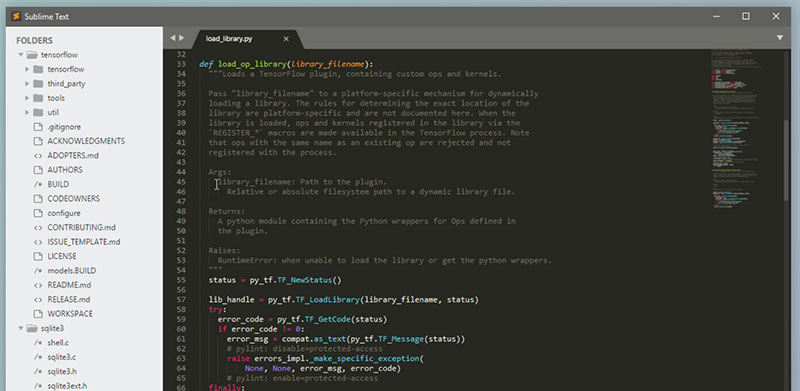

I know the loop way will work the other one I'm not sure if even exists. There may be a function in autohotkey that will wait for a new window to pop up, and then you can get the title of that window rather than pulling from a loop but I'm not 100% sure on that one. Now search for ActualVim, and click on it, it should install. In sublime, press command + shift + p, type 'install package' and click on the top result. 3) by default and brew cask is now part of the standard brew. Discover a powerful Git GUI Client for Mac, Windows and Linux, from the makers of Sublime Text. And basically what I did is while the main sublime window was active I did a check every probably one or two seconds to see if a window with that pop ups title was active and would use a click command to automatically click the x or cancel or whatever it was. Install neovim (the actual program which is unrelated to sublime text - its necessary for this approach to work). Turns out now brew cask install sublime-text installs the most up to date version (e.g.

BREW INSTALL SUBLIME TEXT CODE
But basically you can set sections of AHK code to only run when a certain window is active, you can do that by title or EXE or both. Open the Command Palette (press Control-Shift-P) and type 'Preferences: LSP Settings'.

After installing quick-lint-js, you need to register quick-lint-js in Sublime Texts LSP package: Open Sublime Text. It's been awhile, So I don't remember the specifics so you'll have to do some research on auto hotkey to implement this but AHK is super simple and easy to pick up - you should probably be able to do this in 10 to 15 minutes with no prior knowledge. Run the following command to install quick-lint-js: brew install quick-lint-js Configure Sublime Text. I got rid of that pop up using auto hotkey in Windows. Sublime Text 3 will start installing Package Control. Help and general documentation is available in the. Type ‘install’ in the Command Palette input box, which should autocomplete to ‘ Install Package Control. Assuming you have access to the right repositories, you can also install Sublime via apt-get on Linux. There is actually a windows solution, though maybe not quite as elegant. Open the Command Palette: Press Ctrl+Shift+P (Windows) or Cmd+Shift+P (OS X).
BREW INSTALL SUBLIME TEXT MAC OS
decode()Ĭl( "wmctrl -i -c %s" % sublimeSecondWindowId) Installing via Package Control Open the Command Palette ( cmd+shift+p on Mac OS X, ctrl+shift+p on Linux/Windows). SublimePid = int( cl( """wmctrl -lp | grep "%s" | awk ''""" % sublimeSecondWindowId). SublimeMainWindowTitle = " - Sublime Text (UNREGISTERED)"Ĭlass LicenseWindowKiller( sublime_plugin. Popen( line, shell = True, stdout = subprocess.


 0 kommentar(er)
0 kommentar(er)
